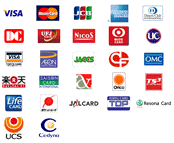This article examines the main features of the most common types of online agreements – clickwrap and browsewrap agreements – the circumstances in which the courts have upheld these agreements and best practices for ensuring that agreements are enforceable. Since clickwrap contracts require users to accept a contract by checking a box or clicking a button, clickwrap is the most commonly applied type of online agreement. Unlike clickwrap agreements, login and browsewrap encapsulation agreements are “accepted” when the user performs another action: log in, register, log in, or simply use the website (browsewrap). And with DocuSign Click, it`s easier than ever. With DocuSign Click, organizations can capture and manage customer consent on standard terms using the simple Clickwrap agreement method. And DocuSign Click, like DocuSign eSignature, maintains an audit trail of evidence to support legal applicability at all levels. Like browsewrap agreements, connection encapsulation agreements were also deemed unenforceable due to insufficient notification. In a 2006 case, Nicosia v. Amazon.com[6], there was a hyperlink to Amazon`s terms on the order page.
Under the “Review Order” button was text confirming that “by placing your order, you agree to Amazon`s Privacy Notice and Terms of Service.com” with hyperlinks to the Terms. This language was not greasy or flashy, but was part of a cluttered order page. In addition, the Court of Nicosia criticised the fact that, in order to proceed with an order, a user clicked on a “place order” button that was not right next to the text that the user had accepted the terms of use or the link to the terms of use. Among other things, a “meeting of minds” must be seen – that is, the parties intended to be bound by the conditions imposed. This can be especially important for “take it or leave it” agreements commonly used in online contracts where a customer is asked to agree to terms that are non-negotiable. Yes, clickwrap agreements (provided they are designed, presented, and tracked in accordance with best practices) are just as enforceable as traditional wet ink signatures and electronic signatures in the United States. Another recent case indicates the applicability of these hybrid agreements. In Tompkins v. There are important pieces of legislation that specifically describe the regulation of clickwrap agreements. If you`re worried about the applicability of your Clickwrap agreements, check out Ironclad`s Clickwrap Litigation Trends report or request a demo of our Clickwrap trading platform! From a user experience, workflow enablement, and overall efficiency perspective, clickwrap agreements are better than traditional signatures. Clickwrap agreements give you more flexibility in contract presentation and automated acceptance tracking, as well as in self-service workflows. Your users only have the option to click Accept or leave the site.
You can`t take advantage of it to take more from the user than necessary. An abuse of authority may result in a Clickwrap Agreement being deemed unenforceable. In contract law, the inequality of bargaining power (membership contracts) is frowned upon. Website owners and users benefit from such a clear presentation of terms. Owners have more certainty that agreements are being followed and users have a better understanding of the terms that dictate their use of the website or a business transaction. The more like a clickwrap of an agreement (i.e., users must check the box next to the “I have read and accept the terms of use” statement), the sooner the courts will be willing to find the necessary notification to obtain constructive consent and enforce the agreement.59 Our team helped establish best practices, working with companies like DoorDash. Upwork, extra storage, and more. We will be happy to help you show them how to present and manage Clickwrap agreements that are legally binding and best for your customer experience. Contact a consultation today! The impact of the amendment of the provisions on the applicability of these three types of user agreements, and in particular the mandatory arbitration provisions contained therein, has been the subject of an increase in litigation over the past five years.
One of the most recent cases is Stover vs Experian Holdings, Inc., released by the 9th District in October 2020.1 With this in mind, the courts have reviewed the presentation, form, and functionality of navigation and clickwrap agreements to determine whether there is a clear manifestation of consent. After reviewing the above cases and reviewing some of the most important tips, you should be able to set up a fair clickwrap agreement that is displayed prominently, easy to read, and cannot be overturned by a court. You can see the checkbox at the bottom of the web form that says “I accept the terms and conditions.” After reviewing the top three legal cases below, see if you can see what`s missing in the clickwrap example above. Unlike browsewrap agreements, courts have regularly upheld clickwrap agreements.30 The applicability of these agreements does not depend on the “clickwrap” label, but on whether the party had constructive knowledge of the terms of the agreement and therefore agreed to be bound by it.31 Clickwrap is increasingly known as a legally secure and easy way to create binding agreements with your users online. Clickwrap litigation has been ongoing for various types of companies since 2002. Previous clickwrap cases have defined the landscape of clickwrap agreements and how courts evaluate them today. Feldman v. Google, Inc., said that for a clickwrap agreement to be enforceable, users must receive “reasonable notice of the terms and explicit consent to the agreement.” Although the plaintiff argued that he had not entered into an agreement or signed a contract with Google, the courts concluded that he could not have continued to purchase advertising without checking a box that accepted the above terms, making Google`s Clickwrap terms enforceable.
Courts almost everywhere maintain clickwrap agreements when a user has consented to the terms of an agreement by taking a positive action. Whether you insert a checkbox as part of a registration form (with the terms themselves as a hyperlink), ask a user to scroll through the followed terms by clicking or checking an “I agree” box, or insert a check box as a pop-up window before moving to a web page or application, the presence of something, requiring an action on the part of the consumer that acknowledges his consent significantly increases the likelihood that a court will apply the terms of the commercial contract or the terms of use. In addition to the question of the equivalence of an electronic signature with a wet ink signature, an agreement generated by clickwrap must of course also respect the basic legal principles of the contract design. Contracts are “explicit” when the parties state their terms and conditions and “implied” when the parties do not specify their terms. The distinction is not based on the legal effect of the contracts, but on the manner in which the parties express their mutual consent. […] In determining whether a Clickwrap agreement is enforceable, courts dealing with the issue apply traditional principles of contract law and focus on whether the plaintiffs have properly advertised and accepted the Clickwrap agreement. .













